Pet Supplies

Is Your Dog’s Bed Making Them Sick? The Complet...
A dog’s bed is more than just a spot for a daily nap—it’s a place of comfort, security, and rest for your four-legged family member. Yet beneath the soft cushions...
Is Your Dog’s Bed Making Them Sick? The Complet...
A dog’s bed is more than just a spot for a daily nap—it’s a place of comfort, security, and rest for your four-legged family member. Yet beneath the soft cushions and cozy covers, an unwashed dog bed can quickly become a hotspot for hidden dangers. Australian pet owners, in particular, face unique challenges: our warm, sometimes humid climate, the frequent in-and-out lifestyle of our dogs, and the proximity of native wildlife all increase the risk of pests and germs thriving where our pets sleep.
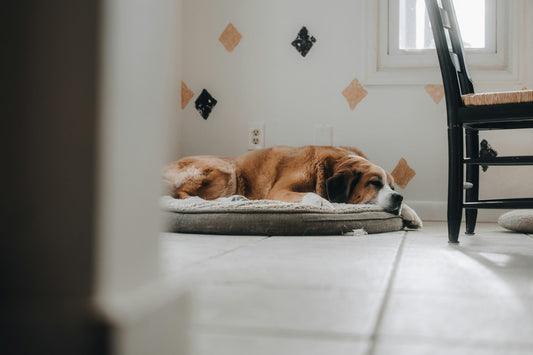
Are There Hypoallergenic Dog Beds for Sensitive...
Australia’s pet owners are renowned for treating their dogs as part of the family. But what happens when your beloved companion develops itchy, irritated skin—or worse, shows signs of allergies?...
Are There Hypoallergenic Dog Beds for Sensitive...
Australia’s pet owners are renowned for treating their dogs as part of the family. But what happens when your beloved companion develops itchy, irritated skin—or worse, shows signs of allergies? For many dogs, sensitive skin isn’t just a minor nuisance; it can disrupt their sleep, happiness, and overall health.

Why Your Dog’s Bed Could Be Causing Allergies: ...
Key Takeaways Dog beds can be a hidden source of allergies for both dogs and humans, harbouring dust mites, mould, dander, and chemical residues. Allergy symptoms may appear as itching,...
Why Your Dog’s Bed Could Be Causing Allergies: ...
Key Takeaways Dog beds can be a hidden source of allergies for both dogs and humans, harbouring dust mites, mould, dander, and chemical residues. Allergy symptoms may appear as itching, sneezing, coughing, skin rashes, or breathing issues in pets and people. Certain bedding materials and poor cleaning routines increase allergy risk, especially in Australia’s variable climate. Regular cleaning and choosing hypoallergenic dog beds can greatly reduce allergen build-up in your home. Australian pet owners can minimise allergies by following expert cleaning advice, selecting safe bedding materials, and consulting local vets if symptoms persist. Introduction A good night’s sleep is vital for your dog’s health and happiness, but have you ever considered whether your pet’s bed might be doing more harm than good? For many Australian pet owners, dog beds are an afterthought—simply a soft spot for their furry friend to rest. Yet, beneath those cosy layers can lurk allergens that may affect not just your dog, but also your family. Allergic reactions linked to pet bedding are on the rise, especially as more households welcome pets indoors and prioritise their comfort. Whether it’s your dog constantly scratching or a family member sneezing when near the dog bed, these seemingly minor issues might actually point to a larger problem: your dog’s bed could be the source of persistent allergies. In this article, we’ll explore how dog beds can cause allergies, identify the main triggers, and provide practical solutions to keep your home and pets healthy. With Australian data, quotes from local experts, and step-by-step advice, you’ll learn how to transform your dog’s bed from an allergy hotspot into a safe, comfy haven. Understanding Allergies: A Simple Explanation Allergies are exaggerated immune responses to substances that are usually harmless—like dust, pollen, or pet dander. In both dogs and humans, allergies can manifest in various ways, from mild sneezing and itching to more severe symptoms like skin rashes or asthma attacks. Common signs of allergies in dogs include: Itchy or red skin Excessive scratching or licking Ear infections Watery eyes or runny nose Hair loss or hot spots For humans, allergy symptoms often appear as: Sneezing and runny nose Itchy, watery eyes Skin rashes or hives Wheezing or difficulty breathing Allergens don’t just float in the air—they settle on surfaces, especially soft furnishings like dog beds. As your dog sleeps, rolls, and scratches, these allergens get stirred up and can easily be inhaled or come into contact with skin. Dr. Katherine Dale, an Australian veterinary dermatologist, explains: “Dog beds are a common but overlooked source of allergen exposure. Both pets and people can suffer, especially in homes where cleaning routines aren’t robust or bedding materials aren’t chosen carefully.” In short, if your dog or your family is experiencing ongoing allergy symptoms, it’s worth taking a closer look at the bed your dog spends hours on each day. How Dog Beds Can Trigger Allergies Dog beds seem like harmless comfort zones, but they are often a significant source of allergens in the home. These allergens can affect not just your dog, but you and your family as well. Understanding exactly how and why this happens is the first step to solving the problem. Materials Used in Dog Beds and Common Allergens The materials used to construct dog beds can be a major contributor to allergy issues. Many beds are filled with synthetic foams, polyester fibres, or treated cotton, all of which can harbour dust mites and trap pet dander. Some imported beds may even be treated with chemical flame retardants or anti-fungal agents that can trigger sensitivities in both humans and pets. Common materials that may cause problems include: Polyester fibre filling: Attracts and traps dust mites. Memory foam: Can retain moisture, creating an environment for mould. Treated cotton or fabrics: Chemical treatments may irritate sensitive skin. The Role of Dust Mites, Mould, and Pet Dander Dust mites are microscopic creatures that feed on dead skin cells shed by both dogs and humans. They thrive in warm, humid environments—like your dog’s bed. Their droppings are highly allergenic and are a leading cause of indoor allergies (Australian Society of Clinical Immunology and Allergy). Mould and mildew can develop in dog beds that become damp from dog saliva, urine, or a humid environment, particularly in parts of Australia prone to high humidity or wet weather. Mould spores are a potent trigger for allergic reactions. Pet dander (tiny flakes of skin and hair) builds up quickly in soft bedding. It is a primary cause of allergies in people, and even dogs can become sensitive to the buildup of their own or other animals’ dander. Chemical Treatments and Manufacturing Residues Dog beds, especially lower-priced or imported products, may contain chemical residues from manufacturing, such as formaldehyde, dyes, flame retardants, or anti-microbial agents. Over time, these chemicals can off-gas or leach out, contributing to allergic responses. This is particularly concerning for young children or pets with sensitive skin. Dr. Alex Hynes, veterinarian and host of Bondi Vet, notes: “Chemical sensitivity is a growing problem, especially for dogs with pre-existing allergies. Choosing bedding with minimal or no chemical treatments is an important step in preventing unnecessary reactions.” Case Study: Real Examples from Australian Homes A family in Brisbane noticed their Labrador developing recurring skin rashes and constant itching. After ruling out food allergies and fleas, their vet suggested switching to a hypoallergenic dog bed made of natural, untreated cotton. Within a few weeks, the dog’s symptoms dramatically improved. Similarly, a Sydney-based pet owner struggled with her child’s constant sneezing and discovered, through allergy testing, that dust mites in the dog’s bed were a significant culprit. Identifying the Signs: Is Your Dog’s Bed the Culprit? Pinpointing the source of allergies can be challenging, especially when symptoms overlap with other common issues. However, if you notice persistent health concerns in your household—either in your dog or in family members—it’s wise to consider the dog’s bed as a possible trigger. Symptoms of Allergies in Dogs If your dog is suffering from allergies caused by its bed, you might observe: Frequent scratching, licking, or biting at the skin Red or inflamed skin, especially on the belly, paws, or face Chronic ear infections Hair loss or “hot spots” Watery eyes, sneezing, or nasal discharge Restless or disrupted sleep patterns According to Greencross Vets, these symptoms can often worsen at night or after your dog spends time resting on its bed. If you notice that your dog seems better after spending time away from its bedding—or symptoms return after lying on the bed—this could be a key clue. Symptoms of Allergies in Humans Humans can also react to allergens that accumulate in dog beds, particularly if the bed is in a shared space such as the living room or bedroom. Watch for: Sneezing, runny or stuffy nose Itchy, watery, or red eyes Coughing, wheezing, or difficulty breathing Skin irritation, hives, or eczema flare-ups Worsening of asthma symptoms (especially in children) If symptoms improve after cleaning or replacing the dog bed, this is a strong indicator that the bed was contributing to the issue. When to Suspect the Bed: Key Patterns and Clues Ask yourself: Do symptoms coincide with your dog spending time on their bed? Are symptoms worse after cleaning or fluffing the bed, which might stir up dust and dander? Does the bed have a musty smell, or can you see signs of mould, dust, or dirt build-up? Do symptoms improve when your dog sleeps elsewhere or when the bed is washed? If you answer “yes” to any of these, it’s time to take a closer look at the dog’s bed. Expert Insight Dr. Rob Zammit, an Australian veterinarian and pet health advisor, shares: “Many owners overlook bedding as a source of allergens, focusing instead on food or environmental factors. In reality, unwashed or low-quality dog beds are one of the most common sources of ongoing skin and respiratory issues for both pets and people.” The Science Behind Allergens in Dog Beds Understanding how allergens build up in dog beds helps pet owners tackle the root of the problem rather than just treating the symptoms. Beds are designed to be soft, warm, and inviting, but these same characteristics create the ideal environment for allergens to accumulate and thrive. How Allergens Accumulate in Bedding Materials Dog beds are exposed daily to fur, skin cells, sweat, saliva, and even the dirt your dog brings in from outside. Over time, these materials penetrate deep into the fabric and filling, creating a haven for: Dust mites, which feed on shed skin cells. Mould spores, thriving in damp or humid conditions. Pet dander and hair, which stick to fabrics and fibres. Chemical residues that may not wash out completely. A 2022 review published by the Australian Society of Clinical Immunology and Allergy highlights that soft furnishings—like bedding and couches—are major reservoirs for household allergens. Because dog beds are often overlooked in cleaning routines, allergen levels can become higher than in human bedding. Scientific Studies and Expert Commentary A 2019 study in the Journal of Veterinary Dermatology found that up to 90% of dog beds tested in Australian homes contained dust mite allergens at levels known to trigger reactions in sensitive pets and people.Link: Veterinary Dermatology Journal PetMD’s dog bed care guide (PetMD Dog Bed Care) advises: “Regular and thorough cleaning of pet bedding is essential for controlling allergen exposure. Failing to wash pet bedding frequently can lead to an increase in allergens, especially in households where pets have direct contact with beds and couches.” The Impact of Australia’s Climate on Allergen Growth Australia’s climate is unique—ranging from humid subtropical regions in Queensland and New South Wales to arid and temperate zones elsewhere. Warm, moist environments encourage dust mite populations and mould growth, making it particularly important for pet owners in these areas to clean and air out dog beds regularly. In addition, bushfire smoke and outdoor pollens—prevalent in many Australian cities and regional areas—can also settle into dog beds, compounding the allergy risk for sensitive pets and people.The Australian Government Department of Health recommends increased cleaning frequency during high pollen and bushfire seasons. Why the Problem Is Getting Worse With more Australian families treating pets as part of the household and bringing them indoors, the amount of time dogs spend on soft furnishings—including beds—has increased. This raises the risk of allergen exposure for everyone in the home. Common Allergens Found in Dog Beds The composition and cleanliness of your dog’s bed can directly affect how many allergens it harbours. Understanding the specific culprits is crucial for effective prevention and management, especially in Australia where climate and lifestyle can exacerbate certain issues. Dust Mites and Microscopic Insects Dust mites are one of the most common—and troublesome—allergens found in dog beds. They feed on dead skin cells and thrive in warm, humid environments, making the soft filling and fabric of dog beds an ideal home. Their droppings contain potent allergens that trigger reactions in both dogs and humans. According to the Australian Society of Clinical Immunology and Allergy, dust mites are a leading cause of allergy symptoms in Australian homes, particularly along the east coast where humidity is high. Pet Dander and Saliva Pet dander refers to tiny flakes of skin and fur that your dog sheds regularly. Saliva, which contains proteins that can also trigger allergies, is transferred to the bed when your dog licks or chews it, or even just by drooling in their sleep. Over time, both dander and saliva accumulate, increasing the risk of allergic reactions—especially for children or adults who cuddle with pets on their beds. Mould and Mildew Mould and mildew thrive in damp or poorly ventilated environments. Dog beds that become wet from accidents, drool, or high humidity (common in coastal Australia) can develop invisible mould colonies inside the filling. Mould spores are known to cause significant respiratory irritation and skin allergies in both humans and pets. A study by the National Asthma Council Australia found that frequent exposure to mould in household fabrics—including pet beds—can aggravate asthma and allergic symptoms. Chemical Residues from Manufacturing Some dog beds, particularly those made overseas, may be treated with chemical agents like formaldehyde, dyes, flame retardants, or anti-microbial treatments. These substances can persist long after purchase and may “off-gas,” especially in Australia’s warm climate. Sensitive pets or family members can react with skin rashes, eye irritation, or respiratory discomfort. Pollen and Outside Contaminants Dogs love to explore outside, often returning to their beds carrying pollen, grass, and even spores from plants. These outside allergens become embedded in bedding, particularly if it is not washed frequently. In spring and summer, when pollen counts are highest, the risk is especially significant for allergy-prone households. Dr. Katie Grzyb, DVM, advises via PetMD: “Allergens like pollen can easily accumulate in your pet’s bedding, and simple washing techniques may not be enough if you’re not using the right products or washing often enough.” How Often Should You Clean Your Dog’s Bed? Cleaning your dog’s bed is one of the simplest yet most effective ways to minimise allergen exposure for both pets and humans. However, the frequency and method of cleaning can make a significant difference, especially in Australia’s diverse climates. Expert Recommendations and Australian Perspectives Veterinary experts and allergists agree: dog beds should be cleaned at least once a week. In humid or high-allergen seasons (like spring), more frequent washing may be necessary. The Australian Society of Clinical Immunology and Allergy also recommends using hot water—above 55°C—to effectively kill dust mites and remove allergens from bedding materials. Dr. Justine Lee, DVM and pet safety expert, writes on Pet Health Network: “It’s not just about odour control. Washing your dog’s bed is crucial for controlling allergens and infectious agents, especially in multi-pet homes or when someone in the family is allergy-prone.” Step-by-Step Cleaning Guide Check the Label: Always read the manufacturer’s instructions before washing. Some beds have removable, machine-washable covers, while others require spot cleaning or hand washing. Vacuum Thoroughly: Before washing, vacuum the bed to remove loose hair, dander, dirt, and dust mites. Use Hot Water: Wash the cover and inner cushion in hot water (above 55°C) to kill dust mites and remove allergens. Mild, Pet-Safe Detergent: Use a fragrance-free, non-toxic detergent to avoid skin irritation or chemical residues. Rinse Well: Double-rinse to ensure no detergent remains. Dry Completely: Dry the bed on high heat if possible, or under direct Australian sunlight to further kill bacteria and mites. Spot Clean Between Washes: Use a pet-safe spray or wipes for quick touch-ups, especially after accidents or muddy outings. Choosing Cleaning Products Safe for Pets and People Always opt for detergents and stain removers labelled as pet-safe, hypoallergenic, and free from harsh chemicals, fragrances, or dyes. Avoid bleach, ammonia, or products containing essential oils (like tea tree) that can be toxic to dogs. For Australian pet owners, brands like Eco Store and Earth Choice offer gentle, environmentally friendly cleaning solutions widely available at supermarkets. Quote or Tip from a Pet Hygiene Expert Anna Webb, pet behaviourist and co-host of Australia’s The Pet Show: “A clean dog bed isn’t just about comfort—regular cleaning helps control everything from fleas to allergies. Make it a weekly ritual, and your pets and family will thank you.” Choosing the Right Dog Bed for Allergy Prevention Selecting the right bed is a critical step in reducing allergen build-up and protecting both your dog and your family. Not all dog beds are created equal—some materials and designs are far better for allergy control, particularly in Australia’s climate. Hypoallergenic Materials: What Actually Works? The term “hypoallergenic” is often used in marketing, but not all products live up to their promises. When shopping for an allergy-friendly dog bed, look for: Tightly-woven cotton or microfibre: These materials prevent dust mites and dander from settling deep into the fabric. Natural latex or untreated wool: Naturally resistant to dust mites and mould, provided they’re processed without added chemicals. Synthetic memory foam (with a removable, washable cover): Memory foam itself is less hospitable to dust mites if kept dry, but it must be protected from spills and moisture. Bamboo and hemp blends: Increasingly popular in Australia for their breathability and natural resistance to mould and bacteria. Avoid beds with thick, loose stuffing, heavy quilting, or plush surfaces that trap moisture and allergens. Types of Beds Least Likely to Trigger Allergies Elevated (cot-style) beds: These keep your dog off the ground, allow for better air circulation, and reduce dust and dander accumulation. Beds with removable, machine-washable covers: Essential for regular deep cleaning. Minimalist designs: Fewer nooks and crannies for allergens to hide. Australian company Snooza is known for producing beds with removable, washable covers and hypoallergenic fillings, popular among local pet owners concerned about allergies. Certifications and Labels to Look for in Australia Oeko-Tex Standard 100: Certifies that fabrics are free from harmful substances. Australian Made Certification: Indicates local manufacturing, which often means better regulation of chemical use. Hypoallergenic claims: Check for specific details about materials and testing rather than relying on vague marketing terms. Avoiding Beds with Heavy Chemical Treatments Many imported or low-cost beds are treated with chemicals for stain resistance or fire retardancy. While this may offer durability, these substances can off-gas or cause skin irritation and should be avoided in allergy-prone homes. Dr. Sarah Howard, veterinary dermatologist with the Australian Veterinary Association, advises: “When choosing a bed for a sensitive dog, less is often more. Choose natural or certified-safe materials, and wash new bedding before use to remove any manufacturing residues.” Practical Steps for Reducing Allergens in Your Home Prevention is always better than cure—especially when it comes to managing allergies triggered by your dog’s bed. Alongside choosing the right bedding and cleaning it regularly, simple changes to your home environment and daily routines can make a major difference. Regular Cleaning Routines for Dog Beds and Surrounding Areas Vacuum and mop floors weekly around your dog’s sleeping area, focusing on corners, skirting boards, and under furniture where dust and dander accumulate. Launder your dog’s bedding at least once a week in hot water with a mild, pet-safe detergent. Wash toys, blankets, and nearby soft furnishings that your dog frequently uses. Rotate between two or more beds or covers so you always have a clean option ready. Air Quality Improvement Tips Ventilation: Open windows regularly to allow fresh air to circulate, reducing indoor allergen build-up. Use air purifiers: Choose models with HEPA filters, which trap airborne allergens like dander, dust mites, and pollen. Dehumidifiers: In humid parts of Australia, use dehumidifiers to keep indoor humidity below 50%, discouraging dust mite and mould growth. Avoid heavy curtains and thick carpets in pet areas, as these trap allergens. According to the National Asthma Council Australia, maintaining dry and well-ventilated spaces is essential for controlling indoor allergies, especially during Australia’s humid seasons. Grooming and Bathing Your Dog to Reduce Dander Brush your dog regularly (outdoors if possible) to remove loose fur and skin flakes. Bathe your dog every 4–6 weeks using a gentle, hypoallergenic shampoo, unless otherwise directed by your vet. Wipe your dog’s paws and coat after outdoor walks to minimise tracking pollen and dirt indoors. How to Spot and Fix Hidden Moisture or Mould Problems Check for dampness under and inside dog beds, especially if they’re placed on carpets or in poorly ventilated rooms. Look for musty smells, discoloration, or visible mould on bedding, walls, or floors. Move beds away from external walls or windows prone to condensation. Promptly address plumbing leaks or spills and ensure bedding dries fully before reuse. Extra Tips for Allergy-Prone Households Consider allergy covers for dog beds—these zippered barriers block dust mites and dander. Limit your dog’s access to bedrooms, especially if someone in the household has asthma or severe allergies. Regularly clean air-conditioning and heating vents to prevent dust and allergen circulation. Dr. Ryan Ong, allergy specialist at Perth Children’s Hospital, recommends: “Small, consistent changes—like weekly washing and good ventilation—often have a bigger impact on allergy symptoms than any single product or treatment.” When to Seek Professional Help Despite your best cleaning efforts and careful product choices, allergies can sometimes persist or even worsen. Knowing when to seek professional help is crucial for the health and wellbeing of both your dog and your family. When Allergies Persist Despite Your Best Efforts If your dog or family members continue to experience allergy symptoms after you have: Regularly cleaned and replaced bedding Improved home ventilation and air quality Switched to hypoallergenic products and materials Eliminated other common sources of allergens (like carpets or curtains near the dog bed) …it’s time to consult a professional. Persistent allergies may indicate an underlying health condition, a more severe allergy, or the presence of hidden mould or contaminants in your home. Consulting with Veterinarians, Allergists, or Cleaning Specialists For your dog:If you notice signs such as chronic scratching, skin lesions, hair loss, ear infections, or unusual behaviour, consult your veterinarian. They can perform allergy testing, recommend medicated shampoos, or suggest dietary changes to help manage symptoms. Some Australian vets specialise in dermatology or allergies and can offer advanced solutions. For people in your household:If family members experience ongoing symptoms such as sneezing, itchy eyes, or asthma attacks—particularly if these improve away from home or worsen near the dog bed—consult a GP or an allergy specialist. Doctors can arrange allergy testing to pinpoint triggers and may recommend medical treatments or environmental controls. Professional cleaning:If mould is suspected or visible in bedding or home furnishings, consider hiring a professional cleaning or remediation service. Australian services like Jims Cleaning and Allergy Free offer specialist cleaning for allergy-prone homes. Australian Health and Veterinary Resources Healthdirect Australia — Trusted health information and resources, including allergy management tips. RSPCA Australia — Advice on pet care and welfare, with links to local vet services. Australian Society of Clinical Immunology and Allergy — Guidance and support for managing allergies in the home. Quote from a Veterinary Expert Dr. Sharon Bryden, Australian veterinary dermatologist, comments: “If home management doesn’t control allergy symptoms, professional advice can make all the difference. Persistent skin or respiratory issues should never be ignored, as they can signal more serious health concerns for both pets and people.” Frequently Asked Questions (FAQs) Can my dog develop allergies from its own bed? Yes, dogs can develop allergies or sensitivities to dust mites, mould, and chemical residues that accumulate in their beds. This often shows as itchy skin, excessive licking, or chronic ear infections. If symptoms appear soon after your dog lies on its bed, the bedding may be the culprit. Regular cleaning and hypoallergenic materials can help minimise these risks. What materials should I avoid if my dog or I have allergies? Avoid beds filled with loose, synthetic stuffing, thick plush fabrics, or those treated with strong chemicals (such as stain-resistant coatings or flame retardants). Instead, look for tightly-woven cotton, untreated natural fibres, and beds labelled “hypoallergenic” or “chemical-free.” Always check for Australian certifications and read manufacturer details. How can I tell if my dog’s bed is causing health problems? Key signs include your dog scratching, licking, or developing rashes after resting on its bed, or family members sneezing, coughing, or having skin reactions in areas where the bed is located. If symptoms improve after cleaning or replacing the bed, it’s a strong indicator that allergens from the bed were to blame. Is washing enough, or should I replace the bed? Washing is essential, but beds that are old, difficult to clean, or have developed musty smells or visible mould should be replaced. For persistent allergy issues, invest in a new bed made of hypoallergenic materials with removable, washable covers. Remember to wash all bedding and covers weekly. Are “anti-allergy” beds actually effective? Some “anti-allergy” beds are genuinely helpful, especially those made with tightly woven covers, natural latex, or certified hypoallergenic materials. However, no bed is completely allergen-proof. The key is to combine a suitable bed with frequent cleaning and good home hygiene. Always check for reputable certifications and genuine product reviews from Australian pet owners. What’s the best way to clean my dog’s bed if someone in the house has severe allergies? Use hot water (above 55°C), a hypoallergenic or fragrance-free detergent, and dry the bedding thoroughly in a dryer or direct sunlight. Consider using allergy covers for the bed and run an air purifier in rooms where the bed is kept. Wash your hands and avoid shaking out bedding indoors, as this can spread allergens. Should I let my dog sleep in the bedroom if someone has allergies? It depends on the severity of the allergies. For mild allergies, keeping the bed clean and using an air purifier may be enough. For severe allergies or asthma, it’s best to keep your dog’s bed out of the bedroom and wash all bedding and soft furnishings frequently. Where can I get more help or advice? Australian Society of Clinical Immunology and Allergy Healthdirect Australia Your local veterinarian or pet dermatologist for animal-specific concerns. Conclusion Dog beds are a staple in every Australian pet owner’s home, but they can also be a hidden source of allergies affecting both your pet and your family. By understanding how allergens accumulate in bedding—from dust mites and mould to chemical residues and outdoor contaminants—you can take concrete steps to protect everyone’s health. Regular, thorough cleaning is essential. Washing your dog’s bed weekly with hot water and a hypoallergenic detergent, vacuuming pet areas, and drying bedding completely can dramatically reduce allergen build-up. When choosing a new bed, opt for hypoallergenic materials, avoid heavy chemical treatments, and select designs that are easy to clean. If you notice allergy symptoms that don’t resolve with improved hygiene, don’t hesitate to consult your vet or an allergy specialist. Persistent scratching, skin rashes, or respiratory symptoms are never normal and should be investigated to ensure lasting health for everyone in your household. Ultimately, providing a clean, safe sleeping space is one of the most loving things you can do for your dog—and for your family. With a little attention and routine care, you can transform your dog’s bed from an allergy hotspot to a haven of comfort and wellbeing. For more expert tips on pet care, bedding choices, and managing allergies, visit reputable sources like the Australian Society of Clinical Immunology and Allergy, Healthdirect Australia, or consult your local veterinarian.
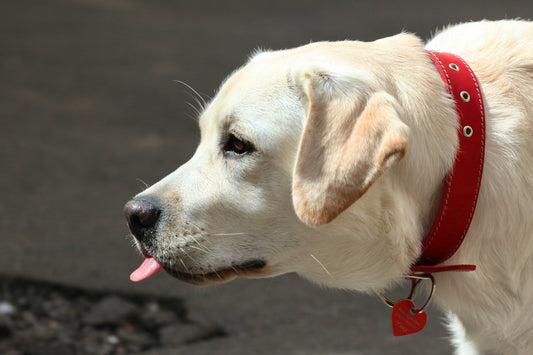
Dog Collar Care 101: How Often to Wash and When...
A dog’s collar is more than just a decorative accessory. It’s a critical part of your pet’s daily safety, identification, and comfort. From holding ID tags to securing leashes, collars...
Dog Collar Care 101: How Often to Wash and When...
A dog’s collar is more than just a decorative accessory. It’s a critical part of your pet’s daily safety, identification, and comfort. From holding ID tags to securing leashes, collars are constantly exposed to dirt, moisture, and physical wear—especially in Australia, where dogs often roam beaches, bush trails, or backyard spaces. Despite their everyday importance, collars are often overlooked when it comes to routine pet care. Many pet owners wash their dog’s bedding or toys regularly but forget that collars need just as much attention—if not more. A neglected collar can lead to skin irritation, infections, and even safety risks if it frays or snaps under tension.
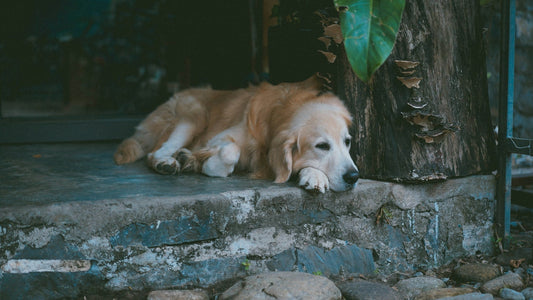
The Extra Comfort and Support for Senior Dogs
In Australia, the best beds for senior dogs are all about comfort. They’re supportive, soft-topped, and easy to get into for those creaky joints. Memory foam beds, orthopaedic mats, and...
The Extra Comfort and Support for Senior Dogs
In Australia, the best beds for senior dogs are all about comfort. They’re supportive, soft-topped, and easy to get into for those creaky joints. Memory foam beds, orthopaedic mats, and low profile lounges are great for supporting stiff hips and elbows. These options make it easier for older dogs to sleep! Plenty of Aussie homes use machine-washable covers and waterproof liners, perfect for our muddy yards or salty sea breeze. Raised beds keep dogs cool during the summer and off cold floors in winter.

How to ensure your dog stays hydrated while tra...
Yes, dogs can drink water while traveling in a car. This new habit will be the most effective means of ensuring their safety and health on the road, particularly in...
How to ensure your dog stays hydrated while tra...
Yes, dogs can drink water while traveling in a car. This new habit will be the most effective means of ensuring their safety and health on the road, particularly in the Australian summer. Provide a few sips of water at pit stops or breaks. This avoids the risk of dehydration, which can occur rapidly in a stationary or traveling vehicle. For either a quick trip or a lengthy journey, a portable water bowl or a spill-proof travel bottle typically does the trick.

Interactive Toys: Engaging Big Dogs to Prevent ...
Interactive toys help prevent boredom in large dogs. They offer a challenge for them to focus on, which helps occupy them when owners are away or busy. Here in Australia, most...
Interactive Toys: Engaging Big Dogs to Prevent ...
Interactive toys help prevent boredom in large dogs. They offer a challenge for them to focus on, which helps occupy them when owners are away or busy. Here in Australia, most new pet owners with big breeds such as Labradors, Kelpies and German Shepherds quickly realise that these dogs need more than a walk. They require more stimulation to remain content!
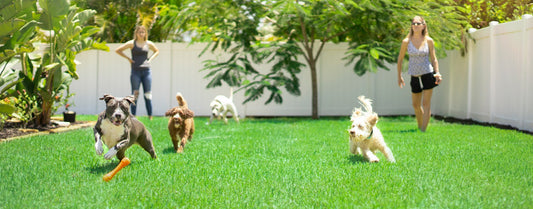
Puppy Boredom Busters: Fun Activities to Keep Y...
In Australia, where many homes have big backyards, there are many dog parks and we have a long workday, dogs can easily become bored when unattended. Chewing shoes, digging in...
Puppy Boredom Busters: Fun Activities to Keep Y...
In Australia, where many homes have big backyards, there are many dog parks and we have a long workday, dogs can easily become bored when unattended. Chewing shoes, digging in the yard, and excessive barking are all signs of puppy boredom. Toys, brief walks and easy home training sessions are all ways to keep their minds active. Rotating new games and allowing time to explore and sniff the yard is effective for native breeds.

The Lifespan of a Dog Bed: How Often Should You...
Every dog owner wants their furry companion to live a healthy and comfortable life—and a big part of that is where they sleep. While it’s common to replace collars, toys,...
The Lifespan of a Dog Bed: How Often Should You...
Every dog owner wants their furry companion to live a healthy and comfortable life—and a big part of that is where they sleep. While it’s common to replace collars, toys, and food regularly, many pet owners overlook one essential item: the dog bed. So, how often should you really replace your dog bed? And what’s the actual lifespan of one?
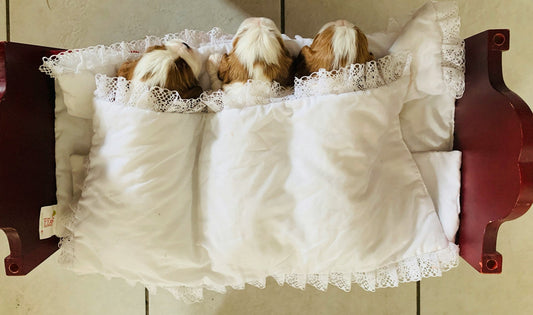
How to Clean a Dog Bed the Right Way: Washing T...
Key Takeaways Washing your dog's bed is crucial for hygiene, comfort, and flea control. Different materials and styles of dog beds require different cleaning methods. Regular cleaning helps reduce odor,...
How to Clean a Dog Bed the Right Way: Washing T...
Key Takeaways Washing your dog's bed is crucial for hygiene, comfort, and flea control. Different materials and styles of dog beds require different cleaning methods. Regular cleaning helps reduce odor, allergens, and the risk of pests. Natural deodorizing and flea-killing techniques can be safer and more effective than harsh chemicals. This article provides step-by-step guides for machine-washable beds, beds without removable covers, and stuffed beds. Introduction Dog beds are more than just a cozy corner—they're your pet's safe space, nap station, and sometimes their go-to hideout. But these same features can also make dog beds a hotspot for dirt, hair, odors, and even fleas. Despite this, many dog owners are unsure how to properly clean a dog bed without damaging it or risking their pet’s health. In this article, we’ll explore practical, science-backed strategies to clean dog beds correctly. We'll address various bed types, the best products to use, how to eliminate odors naturally, how often to clean, and why doing it right matters. Whether your dog’s bed is machine washable, heavily stuffed, or doesn’t have a removable cover, you’ll find step-by-step guidance here. If you’re looking to upgrade your pet’s sleeping space, consider browsing our dog bed collection for high-quality, washable options. Why Cleaning Your Dog’s Bed Matters Health & Hygiene According to the NSF International, pet beds are among the top 10 dirtiest items in the home. They harbor bacteria like E. coli, salmonella, and MRSA. These pathogens can affect not only your pet but also you and your family. Frequent washing drastically reduces this microbial load. Keeping your dog’s environment clean can also help prevent skin infections, hot spots, and allergic reactions that are often caused by contact with bacteria-laden surfaces. Particularly for dogs with allergies or weakened immune systems, a clean bed is part of maintaining overall wellness. Pest Control Fleas, mites, and ticks love to nest in warm, soft fabrics—especially those lined with pet fur and skin flakes. Regular washing helps kill flea eggs and disrupt the life cycle of common parasites. If your dog has had fleas before, be sure to wash the bed at high temperatures and follow up with appropriate treatments to prevent re-infestation. Using flea-resistant covers can also be a helpful long-term strategy. Odor Management Dog beds soak up body oils, saliva, and sometimes even urine. Left unwashed, they emit unpleasant odors. Cleaning neutralizes these smells and creates a more inviting space for your dog. Besides being unpleasant for humans, persistent odors may indicate mold or bacterial growth that could harm your dog. Regular washing and spot-treating not only eliminate these smells but can also prevent microbial buildup that contributes to poor indoor air quality. Longevity of the Bed Proper maintenance extends the lifespan of the bed and its materials. Washing incorrectly can cause seams to rip, stuffing to clump, and covers to shrink. Investing in beds with removable covers and water-resistant liners can simplify cleaning and improve durability. Read care labels carefully and always follow recommended washing instructions to preserve your investment. How to Wash a Dog Bed Without Ruining It? Step-by-Step Guide Vacuum first – Remove hair, dirt, and debris. Use a pet hair remover for deep cleaning. Check the label – Follow manufacturer guidelines regarding water temperature and detergent. Use pet-safe detergent – Avoid dyes, fragrances, and harsh chemicals. Cold to warm wash – Hot water can damage fabric and stuffing. Dry thoroughly – Damp bedding encourages mold. Air dry when possible, or use low heat in the dryer. Pro tip: Place tennis balls in the dryer to fluff up stuffing. Washing a dog bed is much like washing delicate human bedding, but with added consideration for odor, bacteria, and allergens. When in doubt, err on the side of caution and choose gentler methods. A lint roller before vacuuming can further reduce trapped fur and dander. Can You Put Dog Beds in the Washing Machine? Yes—But It Depends Machine washing is safe for most dog beds with removable covers and washable fillings. However, beds with delicate stitching, foam inserts, or non-washable parts should be cleaned differently. Some larger beds may not fit standard machines—consider using a commercial washer at a laundromat. Also, avoid overloading your washer, as the bed may absorb significant water weight, putting stress on your appliance. Best Practice Wash alone or with towels to balance the load. Avoid fabric softener, which can irritate your dog's skin. Use an extra rinse cycle to remove detergent residues. PetMD notes that weekly washing of your dog’s bed can significantly reduce allergens in your home. If you're unsure whether a bed is machine-safe, test a small area first or refer to online guides or manufacturer FAQs. When in doubt, hand-washing may be the safer route. What’s the Best Way to Clean Dog Beds with Stuffing? Beds filled with polyfill or foam require special care: Spot clean stains first with an enzyme-based cleaner. Soak in a bathtub with warm water and pet-safe detergent. Press, don’t wring – Squeezing out water can distort the filling. Lay flat to dry in a sunny, well-ventilated space. Stuffed beds are prone to clumping, which affects comfort and support. After drying, manually fluff and shake the bed to redistribute filling evenly. For long-term care, consider rotating between two beds to allow one to fully dry while the other is in use. Avoid submerging memory foam—spot clean instead. Use baking soda to deodorize. Check out our guide on choosing the perfect bed size to better suit your dog's needs. How Often Should You Wash Your Dog’s Bed? Weekly for active/outdoor dogs Biweekly for indoor-only dogs Immediately after illness, accidents, or flea infestation According to a study by the American Kennel Club, over 40% of dog owners don’t wash their dog’s bed more than once a month—a habit that increases risk of odor buildup and skin irritation. Dogs with allergies, senior dogs, or those with compromised immune systems may benefit from more frequent cleanings. Just like human bedding, freshness impacts quality of rest and health. Incorporate it into your regular cleaning routine. Does Washing Dog Beds Kill Fleas and Bugs? Yes—When Done Properly Washing in warm water (60°C or 140°F) for 30 minutes kills adult fleas and larvae. However, flea eggs are more resistant. For Full Effectiveness: Follow up with a pet-safe flea spray after drying. Treat the surrounding area: carpet, couch, and crate. Regular vacuuming is essential. CDC guidelines support integrated pest control involving both cleaning and treatment. For severe infestations, pair cleaning with oral or topical flea treatments. Environmental sprays can target flea eggs hidden in furniture crevices or baseboards. Can You Use Bleach on Dog Beds Safely? Caution Advised Bleach can be toxic to pets even after rinsing. It’s best avoided unless specifically recommended by the manufacturer. Safer Alternatives: White vinegar (natural disinfectant) Baking soda (odor neutralizer) Hydrogen peroxide (mild antiseptic) If you must disinfect due to illness or contamination, try vinegar followed by a thorough rinse and drying in sunlight, which acts as a natural germicide. Always ensure beds are fully dry and free of chemical residue before allowing your dog to use them again. How to Wash a Dog Bed Without a Removable Cover Beds without removable covers require more effort, but they can still be thoroughly cleaned. Begin by vacuuming the entire surface to remove pet hair, crumbs, and loose dirt. For spot cleaning, use a pet-safe enzyme cleaner on any visible stains and allow it to sit for a few minutes before blotting with a damp cloth. Next, submerge the bed in a bathtub or large basin filled with warm water and a mild detergent. Gently agitate the water to help the soap penetrate the fabric and stuffing. After soaking for 15–30 minutes, scrub the surface with a soft-bristled brush, focusing on stained or heavily soiled areas. Rinse thoroughly multiple times to ensure all detergent is removed. Improper rinsing can leave residues that irritate your dog’s skin. Finally, squeeze out as much water as possible (without twisting or wringing) and lay the bed flat in a well-ventilated area or under direct sunlight to dry. Be patient—this process can take a full day or more depending on bed size and weather. How to Get Rid of Odors from Dog Beds Naturally Persistent odors are common in dog beds, especially those that aren’t washed frequently. Fortunately, natural remedies can help neutralize these smells without relying on synthetic fragrances that may bother your dog. Start by sprinkling a generous amount of baking soda over the entire surface of the bed. Let it sit for 15–30 minutes, then vacuum it thoroughly. Baking soda helps absorb and neutralize acidic odors from pet dander and body oils. For deeper deodorizing, lightly mist the bed with a 1:1 solution of white vinegar and water. Vinegar is a natural antibacterial agent and evaporates quickly, taking odors with it. Avoid using essential oils unless specifically approved for pets, as some (like tea tree or eucalyptus) can be harmful. Activated charcoal pouches or odor-neutralizing sachets placed under or around the bed can also help keep smells at bay between washes. Regular sun-drying can refresh fabrics and eliminate lingering musty scents through natural UV sterilization. Is It Safe to Put Dog Beds in the Dryer? Drying a dog bed safely depends on its materials. Always check the care label first. Most fabric covers made from cotton or polyester are safe to tumble dry on low heat. However, foam inserts, orthopedic pads, or beds with non-removable covers may be damaged by heat and should be air-dried. To speed up drying and maintain bed shape, add a few clean tennis balls or wool dryer balls to the dryer. This prevents clumping and helps fluff up the stuffing. Place an old towel alongside the bed to absorb excess moisture and reduce drying time. Ensure the bed is completely dry before returning it to your dog. Dampness can lead to mold, mildew, and bacteria growth, all of which are hazardous to your pet’s health. If the bed is large or slow to dry, rotating between two beds can ensure your dog always has a clean and dry place to rest. For beds that must be air-dried, placing them outside in the sun on a warm, dry day is ideal. Sunlight not only helps dry the bed faster but also acts as a natural disinfectant. Conclusion Keeping your dog’s bed clean isn’t just about tidiness—it’s a critical part of your pet’s overall health and comfort. By understanding the materials and construction of your dog’s bed, you can choose the safest and most effective cleaning method. Regular maintenance reduces the buildup of harmful bacteria, eliminates pests like fleas, and ensures that your dog’s favorite resting spot smells fresh and feels cozy. From natural deodorizers to washing techniques tailored for different bed types, a well-maintained dog bed benefits both your pet and your household. Establish a regular cleaning routine and keep a backup bed handy so your furry friend is never without a comfortable place to sleep. And when in doubt, always go for pet-safe products and gentle methods. If you’re considering upgrading to a more hygienic and easy-to-clean option, browse our best-rated dog beds designed for both comfort and convenience. Clean bed, happy dog, healthier home.
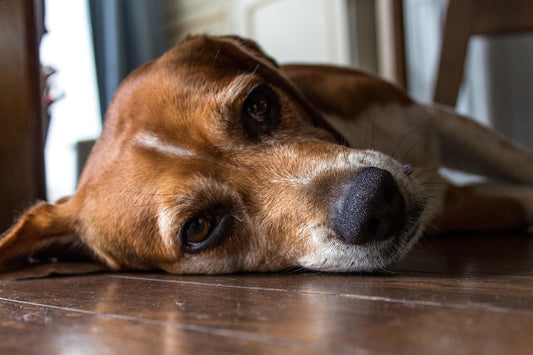
Should Dogs Sleep on the Floor?
Whether by choice or circumstance, many dogs end up sleeping directly on the floor. Some owners see no issue with it, while others wonder if it might be harmful in...
Should Dogs Sleep on the Floor?
Whether by choice or circumstance, many dogs end up sleeping directly on the floor. Some owners see no issue with it, while others wonder if it might be harmful in the long run. "Should dogs sleep on the floor?" is more than a simple yes or no question—it's a multifaceted issue involving health, comfort, environment, and behavior. This article explores this often-overlooked topic by digging into historical precedents, veterinary advice, and the long-term impact of sleeping surfaces on dogs’ wellbeing. We’ll help you make an informed decision about what’s best for your furry companion.
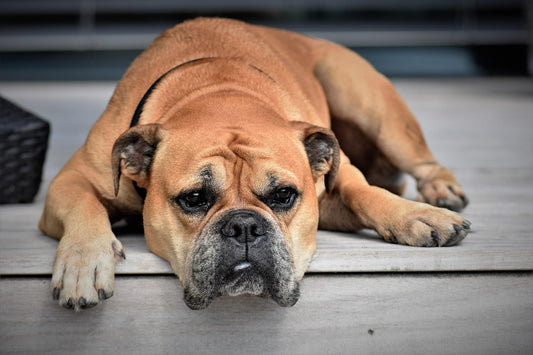
Can Dogs Sleep Without a Bed?
Dogs are resilient animals. For centuries, they have slept under the stars, in dens, or beside their human companions with little more than dirt or straw beneath them. In today’s...
Can Dogs Sleep Without a Bed?
Dogs are resilient animals. For centuries, they have slept under the stars, in dens, or beside their human companions with little more than dirt or straw beneath them. In today’s world, however, the question arises: can dogs sleep without a bed — and more importantly, should they?
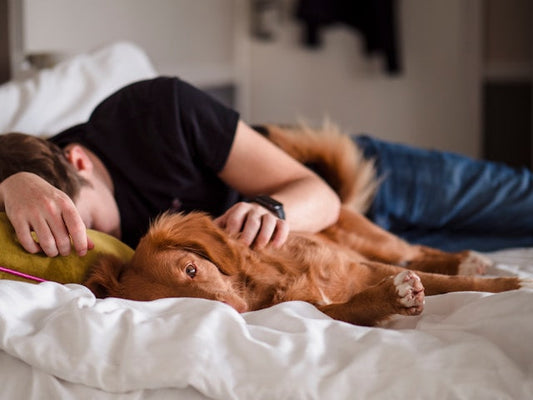
Is it OK to Have Dog on Bed? A Thoughtful Guide...
Sharing your bed with your dog can be a comforting and joyful experience—but is it really OK to have dog on bed? This seemingly simple question stirs up debates among...
Is it OK to Have Dog on Bed? A Thoughtful Guide...
Sharing your bed with your dog can be a comforting and joyful experience—but is it really OK to have dog on bed? This seemingly simple question stirs up debates among veterinarians, dog trainers, pet lovers, and sleep experts alike. Some advocate the closeness as a bonding experience, while others caution against potential health, behavioral, or hygiene risks.
